Essential Travel in Sabah Part 2
Second part on travels in Sabah.
This is a kid of my housemates relatives going to have a swim, in this case jumping off the back of their water village direct into the ocean in his backyard.
Semporna - Coraline Islands
Semporna is not as well promoted as much of the other attractions in Sabah which is a pity as the potential is there but also promises the ardent traveller unspoilt natural beauty and rustic kampung life of the Bajau people who make their home on the various coral islets, the largest of which is Pulau Bum Bum. The main attraction here is the annual Pesta Lepa-lepa in which the Bajau Laut, or sea gypsies who live most of their lives out in the ocean without touching land at all for some, display their fine crafted wooden crafts adorned with intricately made sails. The Tun Sakaran Marine Park is also currently in the works and will add another interesting dive and beach destination to Sabah's natural attractions. Other than that off the beaten track the best would be a homestay programme with one of the locals in their kampungs, experiencing their lifestyle which is tied intricately with the ocean. The various islets around here are mostly made of limestone and corals, their base is often erroded leaving intricate shapes and the land is filled with green stunted vegetation and forests. Many islands are also considered pusaka or 'heirlooms and sacred' passed down through generations and venerated. Seaweed is a huge industry here and huge acres can be seen outstretched just off the coast. Other than that not much is can really be said of the place, there are only two luxury hotels and the town is small and without much charm.
Pine trees line the long stretch of white sanded beach leading the way to Simpang Mengayau.
Stand at the Tip of Borneo
Sabah can lay claim to two of the most extremeties of the Borneo isles, Simpang Mengayau is one of those, often touted as the tip of Borneo at its most northern point. Getting there is a bit tricky but rewarding nonetheless, Kudat is the nearest entry point and from then on a drive through several long stretches of non tarred road into remote villages would find you at the northern terminus of Sabah. There is much enchanting sights here, the environment is pristine with long stretches of crystaline water and whitish sand coast minus the crowds in more famous places. Villages placed amidst lush greenery and coconut palms of which Kudat is famed for and at the end is a geological marvel. The end of the coast is mostly dark rocks and sand stones and stretches out into the sea. Standing at the edge and enjoying the sea breeze while taking in the view is a great moment. Take time to pose with the memorial in the shape of a cut off circular boulder with the map of sabah and a large 'you are here' sign to boast that you were really here. Enjoy a nice cold young coconut drink while you're here as well.
Rolling hills, deep cut valleys, jigsaw plots of farms, fields and dwellings are characteristics of the various mountain ranges between the Kinabalu and Crocker range.
Trek to the Highlands
Several national parks are situated within the confines of the heartland of Sabah which is most strikingly defined by its highlands and mountain ranges especially that of the Kinabalu Park and Crocker Range National Park. These are easily accesable and most tours include packages for tourists wishin to visit. Other sights for adventurers wanting to go off the beaten track could include a visit to some of the remote small towns and villages situated amidst them, most of which farm the rich fertile valley plains of rice. Kundasang is famed for its flowers, vegetable and dairy produce and is a short stop from the Kinabalu Park headquarters. Here can be found the Kundasang War Memorial which houses several beautiful gardens and vistas all themed for the various countries whose brave soldiers fought and died during World War II in Borneo. As mentioned before visitors should spend some time at the national parks, while Kinabalu Park is more famous, the Crocker Range Park is larger and stretches across a wide range offering different experiences. To this there is not one park headquarters but split between several located in different districts such as Inobong in Penampang, Mahua in Tambunan and the main park headquarters in Keningau. Attractions include a heavy duty trek along the historical salt trails where remote villagers traverse deep jungles to the nearest town to trade, a stop at the Rafflesia Center to view Asia's largest and smelliest bloom, a cool dip at the Mahua falls or even take in a breath taking vista of most of Sabah's western coast atop several high viewing platforms available.
Diners enjoying tasty seafood while enjoying cultural performances at Kampung Nelayan
Taste Mouth Watering Seafood
Sabah has a wide swath of coast line and with it is stocked with numerous seafood items which are caught fresh and sold cheaply. Visit any of the local town markets and you'd be spoilt for choice at the selection available from mud crabs, rays, fresh fish, lobsters, tiger prawns and more. Also available are many seafood derived produce such as salted fishes, dried prawns, keropok and other such items. Visit the local restaurants and many meals are prepared to entice your taste buds, famous seafood places include Shuang Tian in the city center which is a collection of seafood restaurants, Port View offering more grand settings for diners and even Kampung Nelayan which is a floating platform and offers cultural dances for the diner's entertainment while they eat. For those wanting to bring back some fresh seafood for relatives as gifts or for their own kitchen, services are available to freeze fresh catch which is easily transportable and guranteed freshness.
Bajau horsemen in formation on the parade grounds in Kota Belud
Bajau Horsemen Skills at the Tamu Besar Kota Belud
Sabah has several major cultural festivals in its annual calendar. One not to be missed is the Tamu Besar Kota Belud held on the month of November each year. Several main features are of interest, one is the parade by Bajau horsemen of all ages as well as their steeds which are famed as race horses. Often both rider and horse are dressed up for the day and perform various deeds such as formation riding, traditional games, horsemanship tricks etc. Other than that the tamu besar is a large gathering of locals offering all manner of items for sale from the local crafts such as finely crafted parangs (machettes) with very keen edges, pandanus weave, traditional food and kuih and much more. Although tamu is held here every Sunday during the Tamu Besar its size is greatly increased and offer more variety of trade items.

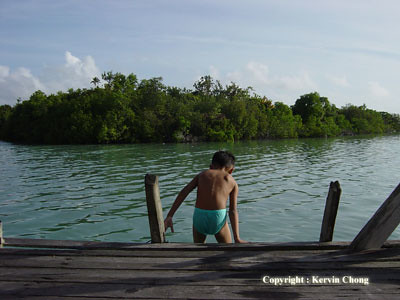
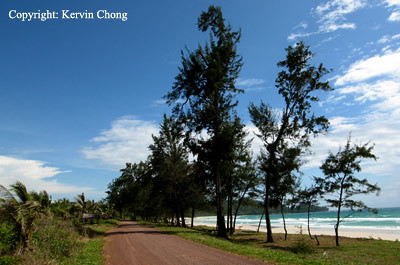
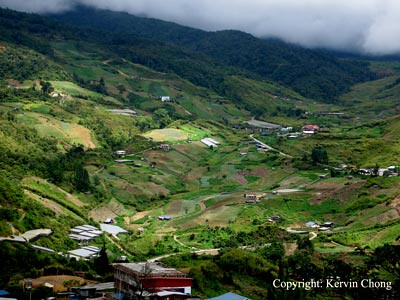
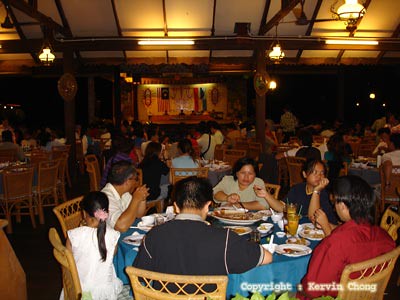
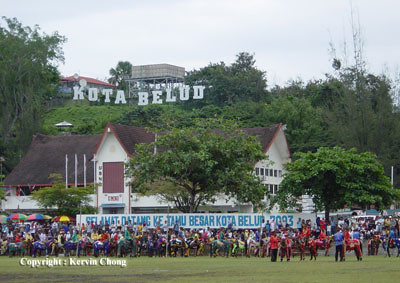
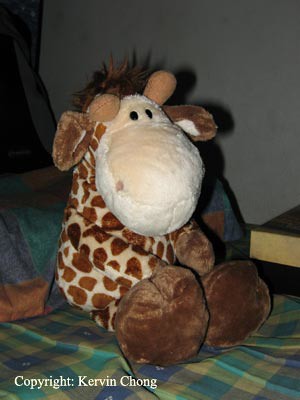

No comments:
Post a Comment